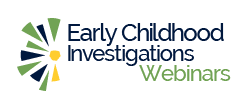Building Enduring Consulting Relationships that Deliver Results
by, Amanda Schwartz, Ph.D.
Consultant
I made the leap from teaching in the classroom to consulting at the national level at least eighteen years ago. It was a gigantic step and required thinking about my everyday work in a totally new way. The shift was from problem solving what I could control in my classroom’s day-to-day to how I could empower others to manage their own classrooms and programs. It required redefining not just my own perspective, but letting go of some of the things I previously had control over.
I think this is one of the biggest challenges we, as consultants, face. It’s hard to stop “doing” and start “guiding”. And ultimately, if you want to make real change in a program means teaching others to “do” and giving them their own structures to solve problems.
So how do we do this?
As you will hear on the webinar, “Building Enduring Consulting Relationships that Deliver Results” on May 11th, there are a lot of formal processes that many of you know – Reflective Supervision, Active Implementation, Data-Driven Decision Making. Essentially, all of these methods rely on 3 basic strategies:
1.) Get to know the program you work with. I really mean this – it’s not enough to go to a program and do the same training you’ve done with a million other programs. Ask the program questions that will offer you the breadth and depth of program life.
- What is every day like in the program?
- What are some program successes?
- What are some of the things that are challenging?
- What impacts the program in both positive and negative ways?
- What does support look like (either existing or desired)?
- In an ideal world, what would the program be?
2.) Challenge assumptions about the program. It’s natural to use your perspective to make guesses about what is going on in a program. But these guesses need to be tested. Ask around and get to the heart of what is going on. Listen closely to what you hear and see how all of it comes together.
- Are there different groups within the program that see things differently?
- What do those people have in common?
- In looking at what you have observed and heard, how does it make sense to you?
- If you have a chance to look at data from the program, what does that tell you?
- After a deep look at the data and everyone’s perspectives, what do you know?
3.) Individualize based on what you learn. Bring together administrators, staff, and families to think about their program. Open a dialogue that fosters problem-solving rather than problem-finding and blaming. Put new problems and questions in a safe spot until you resolve the problems the program prioritized, unless you think the new problem or question is at the root of the one they are trying to solve. And, guide with caution – your research should help you know some of the bumps and pitfalls in front of you. Find ways to keep relationships strong and reduce/eliminate some of the negative dynamics in the program.
Consider this example:
I was working with the ABC preschool Context and relationships are everything. The most effective consultants know the context of the program they support and enhance their relationships so that everyone can be heard and find solutions together. [1] The preschool’s name has been changed to protect privacy. To learn more register for Amanda’s webinar: Building Enduring Consulting Relationships that Deliver Results See Amanda’s profile on ECEexperts.com




Leave A Comment